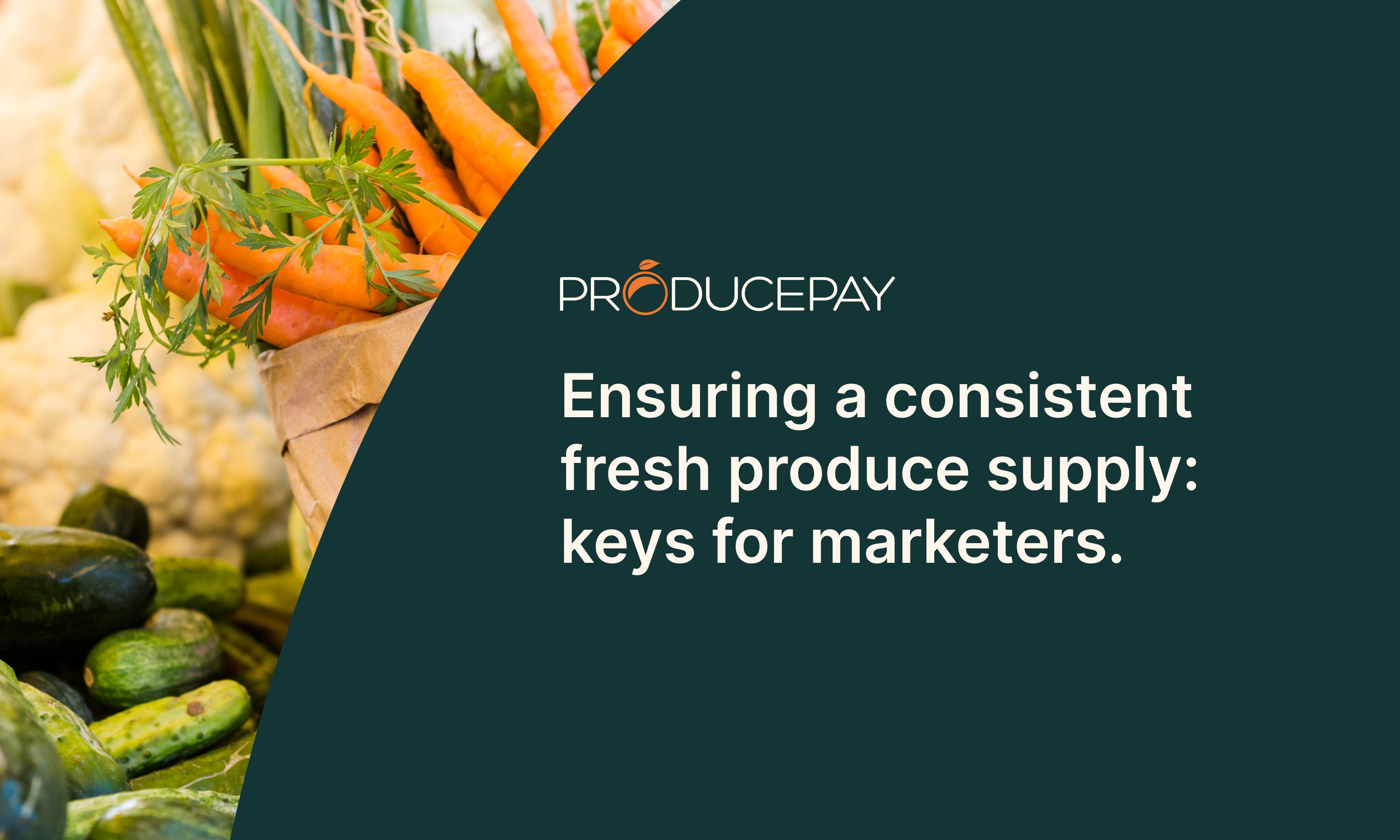
Ensuring a consistent fresh produce supply: keys for marketers
In today’s global agriculture landscape, fresh produce marketers face the critical challenge of securing a steady flow of high-quality produce. This challenge grows in complexity due to the agricultural sector’s inherent volatility, shaped by factors such as unpredictable weather, price fluctuations, and shifts in market supply and demand.
The uncertainty in fresh produce supply impacts the entire chain—from production to retail delivery. Retailers, who act as the direct link to consumers, rely on stable, high-quality supplies to maintain customer satisfaction and loyalty. Meanwhile, consumer expectations for quality, freshness, and sustainability continue to rise.
So, how can retailers secure consistent supply in such a dynamic environment? Below are four key strategies to achieve that goal.
1. Quality control and traceability enhancement
Adopting technology to improve quality control and traceability is essential for securing reliable, high-quality supply. Systems that capture, store, and present information in real-time become critical tools in this effort.
Quality control systems should operate throughout the supply chain—from harvest to distribution. After harvest, rigorous inspections can assess critical factors like defects, damage, diseases, size, and color. This process often involves trained personnel and specialized technologies, such as sensors, machine vision, or ventilation systems that manage ethylene levels, ensuring optimal product maturity for the market.
These systems also enhance produce traceability, improving transparency within the agricultural supply chain. By recording detailed data at every stage—from field to retailer—companies can maintain quality standards and build trust across the supply chain. Blockchain technology is emerging as a promising tool to streamline and secure traceability efforts.
2. Logistics chain optimization
Optimizing logistics is also essential to maintain produce quality. While cold chain management is crucial for perishable goods, demand planning, route optimization, and inventory management also play a role in reducing transit times. Faster delivery minimizes product loss, ensures freshness, and supports sustainability.
Predictive logistics, powered by data analytics and machine learning algorithms, is proving to be a valuable resource. Additionally, Internet of Things (IoT) technologies enable real-time shipment tracking. This allows monitoring of critical conditions like temperature, humidity, and ethylene levels during transport, enabling companies to maintain optimal conditions and make timely adjustments when needed.
Innovative packaging solutions also contribute to fresh produce preservation. Current trends include active packaging, which incorporates ethylene absorbers for climacteric fruits, antimicrobial coatings, and nanoparticles to enhance moisture resistance. These innovations extend shelf life and help maintain product quality upon delivery.
3. Strong relationships with suppliers and diversification
Building solid relationships with suppliers and key partners throughout the supply chain is vital to securing a steady, high-quality supply. Offering long-term agreements, predictable pricing, and shared access to technology can benefit all parties involved.
Promoting sustainable agricultural practices among growers also ensures produce quality and strengthens the long-term resilience of the supply chain.
Supply diversification is another key strategy. Developing a broad network of suppliers across different regions helps mitigate risks tied to market volatility. Geographic diversification also helps compensate for seasonal variations and regional climate challenges.
4. Quality certifications
Certifications play an important role in assuring and communicating produce quality. These certifications—varying by region and product type—confirm compliance with specific standards for food safety and traceability.
Some of the most recognized certifications worldwide include Global G.A.P. (focusing on food safety and traceability), IFS Food Standard, ISO 22000-based certifications, and organic certifications like USDA Organic in the U.S. and EU Organic in Europe. Organic certifications confirm that products are grown without synthetic pesticides or fertilizers.
Obtaining and displaying such certifications not only ensures produce quality but also facilitates access to premium markets and builds trust among both retailers and consumers.
Predictable Commerce: The Key to Reliable Supply
Overcoming volatility to maintain consistent supply and quality in fresh produce requires the best industry-tailored solutions. Here is where ProducePay’s Predictable Commerce Programs offers a way forward.
These programs bring together growers, marketers, and retailers in a more stable and efficient supply chain and are specifically designed for the most volatile commodities in the market.
Thanks to the combination of our global network of sustainable farmers, cutting-edge technology and on-site agronomists, real-time monitoring is carried out, ensuring produce quality from harvest to delivery.
This comprehensive visibility empowers marketers to meet the demands of retailers and consumers, reinforcing their ability to deliver reliable, top-quality products year-round.

